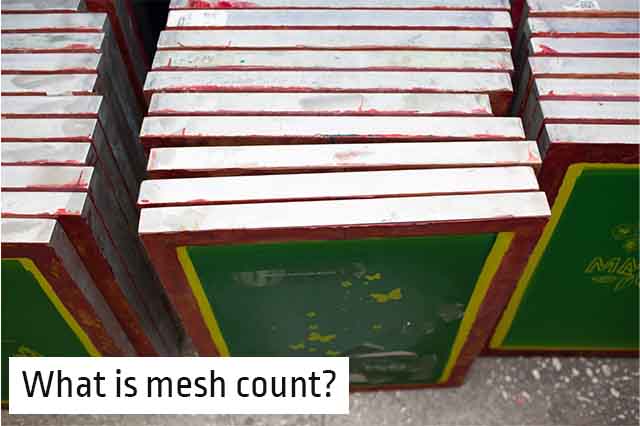
Mesh count or mesh density is a measure of how many polyester threads cross each other in each square inch of the screen.
For example, a 110 mesh screen will have 110 intersecting threads per square inch.
The higher the mesh count, the finer the holes in the screen.
Different grid densities are used in different works – for example, when the graphics are thin and delicate, a screen with a different density will be needed than for graphics with thick lines.
What influences the choice of mesh density?
the graphics
The first factor that affects when choosing screen density is the level of detail in the graphics.
For example, if an image has extremely sharp and fine detail, a low mesh screen simply won’t contain the detail.
The large gaps in the screen will cause the fine lines or dots in the image to come out stuck together and not clear.
If the graphics will have large details and you choose a screen with a high density – not enough ink will pass through the holes and the graphics will be faded or without enough color.
thickness of the ink
The other important factor to keep in mind is the thickness of the ink.
Thinner inks, such as water-based inks, generally require a higher mesh count. If too low a mesh count is used, the thinner ink may pass through in large quantities and thus flood the fabric being printed on and cause the print to be inaccurate.
On the other hand, printing with thick ink, such as plastisol or white ink, should be on a low-density network because otherwise the ink will not completely transfer to the shirt, and the result will be that the shirt printing will not be sealed or have coverage problems.
emulsion
Another thing that is important to consider is that for each screen density, the correct amount of emulsion should be adjusted – because of the difference in the size of the gaps, different sized gaps contain different amounts of emulsion.
The difference in the amount of emulsion is expressed in the time it takes to expose the mesh to light in order to get a quality stencil – a mesh with a high density will need a lower exposure time than a mesh with a low density mesh and this is because we will use less emulsion to cover it.
Summary
If so, the mesh density is affected by the nature of the graphics we want to print and it affects the type of ink we will use and the amount of exposure time we will need to get a quality stencil.
